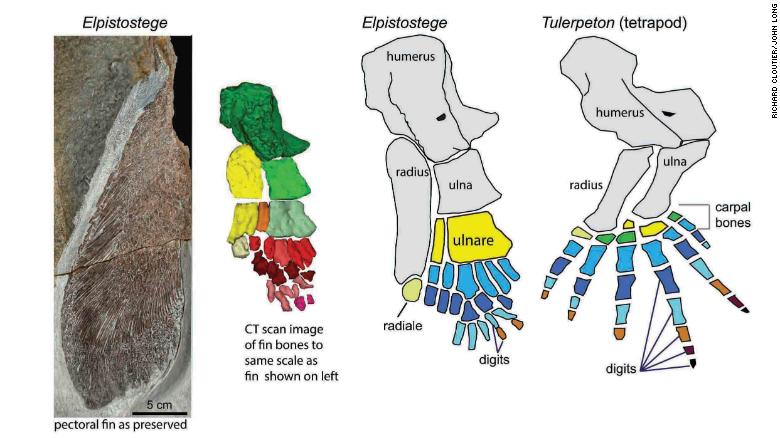Atheists and atavists! Step this way and let me present to you, the Elpistostege, the earliest example of fingers in a transitional fossil!
Cue the creationists: “So what if you found a fossil? Now you have to find TWO intermediate fossils!”

Fish finger fossils show the beginnings of hands
Researchers have discovered the fossil of a fish with finger-like digits in its fin that lived 380 million years ago, according to a new study. And they believe it bridges the evolutionary gap between marine and land vertebrates as one of the oldest examples of a skeletal pattern resembling a hand.
About 374 million years ago, life on Earth began to transition out of the world’s oceans to walk on land. This gave rise to the tetrapods, or four-limbed vertebrates, that included dinosaurs, land animals and eventually humans. Scientists consider this transition from water to land, and animals acquiring hands and feet, to be one of the most significant events in the history of life on Earth.
But the fossil record about the evolutionary step between marine and land life is sparse. Researchers have focused their efforts on tetrapod-like fish, called elpistostegalians, that lived between 359 and 393 million years ago during the Middle and Late Devonian periods.
Until now, they had never found the complete skeleton of the pectoral fin, also known as the fore-fin. But researchers have discovered one of the most complete elpistostegalian fossils yet: a 5-foot-long fossilized fish in Miguasha, Quebec.
[…]
The study published Wednesday in the journal Nature.
“Today we announce in the journal Nature our discovery of a complete specimen of a tetrapod-like fish, called Elpistostege, which reveals extraordinary new information about the evolution of the vertebrate hand,” said John Long, study author and Strategic Professor in Palaeontology at Flinders University in Australia.

Speaking of interesting fossils, ‘Wonderchicken’: oldest fossil of modern bird discovered :